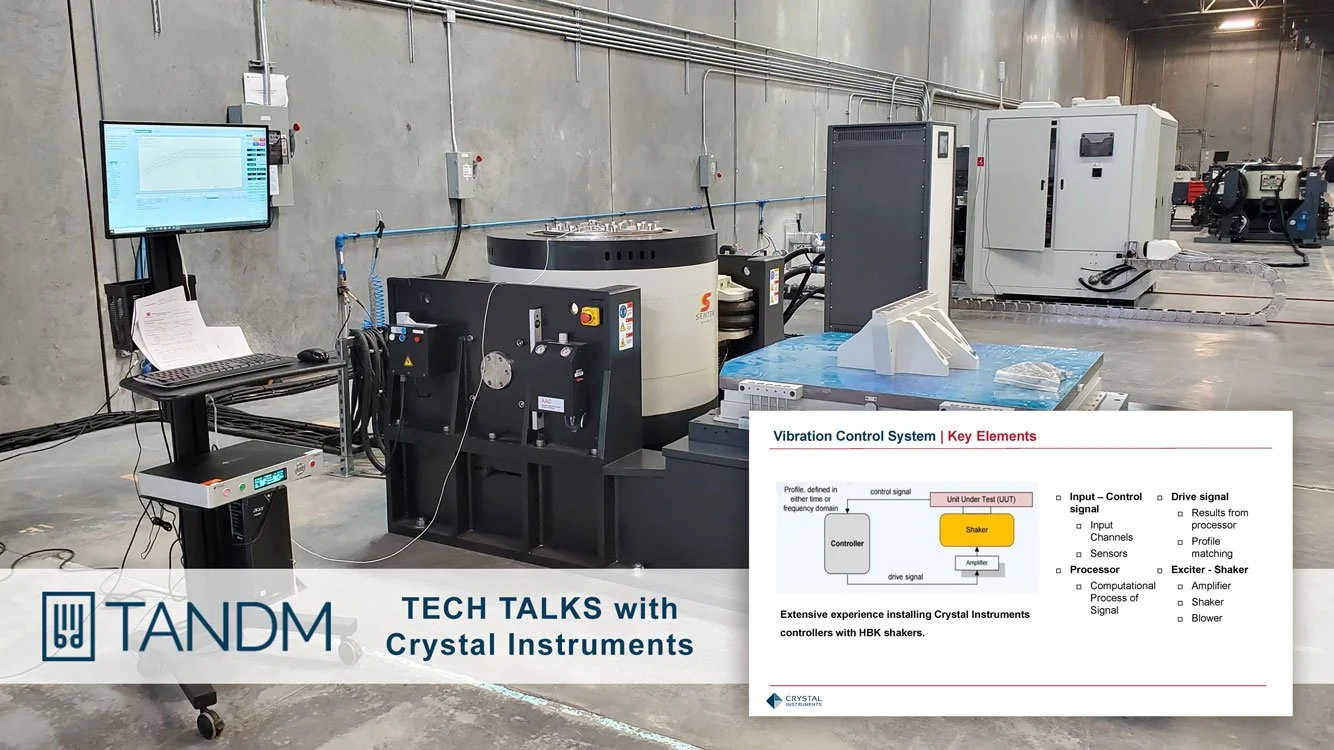This article examines the acquisition of modal characteristics from a train wheel through experimental modal analysis. Train wheel and rail interactions are critical components worth studying. If the wheel-rail interactions while accelerating or braking excite any of the system modes during the ride operation, it can induce an undesirable effect upon the passengers’ ride and comfort. Hence, the execution of modal analysis is vitally important.
Read MoreModal analysis provides important information about the natural frequencies, damping coefficients and mode shapes of a test unit to optimize its design and improve its structural behavior. The modal parameters and mechanical properties of a structure helps users understand its vibration characteristics in operating conditions.
Read MoreSignal Explorer allows users to easily compare signals from the same channel in different files. This software is a small .exe file included with EDM installation media and is available for download on the Crystal Instruments support site. No installation is needed. Just run it and load the folder containing your data files.
Read MoreIt is crucial to ensure that none of the engine components have any resonances that lie within the optimal rpm operation range. If any of the parts have certain structural dynamics in the range of operation, then the vibration and noise particularly at resonant frequencies can be dangerous and unpleasant.
Read MoreAll electronic systems are subject to noise. In general, noise is the portion of a signal that is undesirable, which means that the perspective or context is important for determining what noise is.
Read MoreIn this case, the modal characteristics of a robot are acquired by performing experimental modal analysis. This robot is used in combats where the winner tries to destroy the opponent by causing damage or breaking crucial components. A quick modal survey reveals the natural frequencies, damping and mode shapes of the robot which helps users identify weak links in the structure. Hence, modal analysis plays a significant part in optimizing the design and performance of these robots.
Read MoreThe case described in this article studies the modal characteristics of processing equipment acquired through experimental modal analysis. A hammer impact test is carried out with two tri-axial accelerometers to study the modal behavior of the test unit. The roving response method obtains a complete FRF column.
Read MoreTechnical sessions (Tech Talks) exploring Electrodynamic Vibration Testing technology were organized by Crystal Instruments partner TANDM in South Africa at Cape Town Hazendal Wine Estate, Stellenbosch on March 15, 2022 and at Pretoria, Future Africa, University of Pretoria on March 17, 2022.
Read MoreCrystal Instruments (CI) recently attended the International Modal Analysis Conference (IMAC) held during the week of February 7–10, 2022 at the Rosen Plaza hotel in Orlando Florida. The conference was an all-around enjoyable experience, and it was good to be back in person to interact with and discuss the on-going work folks are pursuing in modal analysis.
Read MoreThe auto-wake feature is a new and powerful function provided in EDM 10.0 software. This feature allows users to set up a wake-up alarm for Spiders to power on, perform a test, and power off. Users can upload up to 8 predefined tests and run these in Black Box mode (without a connection to a computer or network to run). This convenient mode allows users to acquire data autonomously or with little user intervention.
Read MoreSome data acquisition applications will inevitability run into one of the most common problems of the information age: information overload. Today, modern DAQ systems, such as the highly versatile Crystal Instruments Spider product line, can store significant amounts of vibration data. Now, memory limitations are significant. However, sifting through large amounts of data in order to capture a small transient event is undesirable.
Read MoreTurbine engines are the power sources of aircrafts. The reliability of turbine engines is crucial when ensuring aircraft safety. Failure analysis of turbine engines reveals the catastrophic damage a turbine blade failure can cause to the engine, depending on the location of the blade. Turbine blade fatigue testing can help engineers investigate and improve the material and design of turbine blades.
Read MoreModal testing provides a crucial verification link in structural design by verifying the accuracy of simulation results and determining the structural characteristics of the actual product.
Read MoreA Ground Vibration Test (GVT) involves carrying out modal analysis of an aircraft and its sub-assembly components to analyze and detect any changes in their structural properties. The modal parameters determined through this testing are used to validate analytical models. The modal characteristics are also used to predict the flutter of the aircraft in order to create a safe flight envelope before flight operation. Thus, GVT is a crucial process in the design and development cycle of aircrafts.
Read MoreThis paper discusses the usage and unique features of Multiple-Exciter Single-Axis (MESA) control with Crystal Instruments vibration controller.
MESA is a type of multiple exciter setup with all exciters arranged along a single axis. The goal is to combine the excitation forces and dimensional capabilities from multiple exciters to test a long and/or large Unit Under Test. MIL-STD-810G Method 527 discusses the terminology involving single and multiple exciter testing configurations.
Read More














